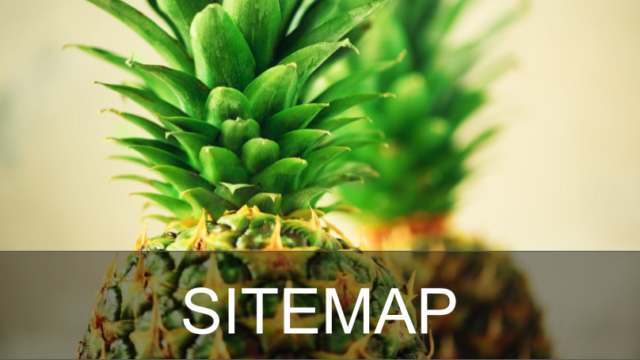1. Introduction: From Complexity to Creativity – Bridging Mathematical Foundations and Innovative Thinking
Building upon our understanding of how mathematics models the complexity of digital systems, it becomes evident that the same patterns and structures can serve as powerful catalysts for creativity. While mathematics provides a language to decode intricate phenomena—from neural networks to cryptography—it also offers a rich palette of patterns that can inspire breakthroughs in art, design, and innovation.
Transitioning from merely understanding mathematical models to actively leveraging their patterns requires a shift in perspective. Instead of viewing these patterns solely as abstract structures, recognizing them as sources of inspiration opens new avenues for creative problem solving. This approach enhances our ability to see connections across disciplines, fostering innovative solutions rooted in fundamental mathematical principles.
As explored in Understanding Complexity: How Math Shapes Our Digital World, mathematics is not just a tool for analysis but also a fertile ground for creative exploration. Recognizing mathematical patterns as sources of inspiration bridges the gap between scientific rigor and artistic expression, fueling innovation across diverse fields.
Table of Contents
- The Nature of Mathematical Patterns as Creative Catalysts
- Cognitive Processes: How Mathematical Thinking Fuels Creative Problem Solving
- From Algorithms to Artistic Expression: Cross-Disciplinary Inspiration
- Unlocking Hidden Patterns in Data for Innovation
- Educational Strategies: Cultivating Creativity through Mathematics
- Returning to Complexity: How Creative Applications Simplify or Transform Mathematical Models
2. The Nature of Mathematical Patterns as Creative Catalysts
Mathematical patterns extend beyond their structural roles in equations or models; they embody relationships, symmetries, and repetitions that can ignite creative processes. These patterns are often visual or conceptual, serving as templates for innovative ideas. For example, the Fibonacci sequence, which appears in natural arrangements of sunflower seeds and pinecones, has inspired architects and designers to emulate organic forms that evoke harmony and balance.
Historically, patterns such as fractals have revolutionized artistic expression. The intricate, self-similar structures of fractals—like the Mandelbrot set—have influenced digital art, creating mesmerizing visuals that mirror the complexity of nature. Similarly, symmetry and tessellation patterns have shaped architectural marvels and decorative arts across cultures, illustrating how recognizing subtle patterns can lead to unexpected creative breakthroughs.
Recognizing these patterns requires a keen eye for detail and an openness to interdisciplinary exploration. When artists and scientists identify underlying structures—such as the recursive nature of fractals—they unlock new possibilities for innovation, blending scientific insight with aesthetic appeal.
3. Cognitive Processes: How Mathematical Thinking Fuels Creative Problem Solving
Pattern recognition is fundamental to both mathematical reasoning and creative innovation. By identifying recurring themes or structures, thinkers can generate novel ideas that transcend conventional boundaries. For example, algorithms used in data compression rely on detecting repetitive patterns, which can then be repurposed to develop new creative tools for artists and designers.
Several techniques facilitate the application of mathematical reasoning to creative processes. These include:
- Analogical thinking: Drawing parallels between mathematical patterns and real-world phenomena to spark new ideas.
- Iterative experimentation: Using iterative algorithms to refine creative concepts progressively.
- Abstract visualization: Employing geometric or topological representations to explore complex ideas visually.
Case studies abound: the development of generative art relies on mathematical algorithms, while innovators like Buckminster Fuller used geometric and structural patterns to design pioneering architectural forms. These examples demonstrate how leveraging mathematical insights enhances creative problem solving.
4. From Algorithms to Artistic Expression: Cross-Disciplinary Inspiration
Mathematical algorithms serve as a bridge between abstract computation and tangible artistic creation. For instance, the Julia and Mandelbrot sets, generated through iterative algorithms, have become iconic in digital art, inspiring countless visual projects. Architects incorporate fractal patterns into building facades, creating structures that resonate with natural forms.
The influence of chaos theory and symmetry further enriches visual creativity. Chaotic systems, such as weather patterns or fluid dynamics, inspire dynamic sculptures and interactive installations that embody unpredictable yet ordered behavior. Digital tools—like fractal generators and generative design software—translate complex mathematical concepts into accessible creative outputs, democratizing the artistic process.
5. Unlocking Hidden Patterns in Data for Innovation
In the era of big data, advanced pattern analysis tools—such as clustering algorithms and neural networks—enable innovators to uncover hidden opportunities. For example, financial institutions analyze market data to detect subtle patterns predicting trends, leading to innovative investment strategies.
Machine learning and artificial intelligence have become modern instruments for pattern discovery. Deep learning models identify complex correlations within vast datasets, inspiring new products, services, and creative content. Practical applications include personalized marketing, drug discovery, and urban planning, all rooted in mathematical pattern recognition.
| Data Analysis Technique | Application |
|---|---|
| Clustering Algorithms | Market segmentation, customer profiling |
| Neural Networks | Image recognition, predictive analytics |
| Fractal Analysis | Environmental modeling, medical imaging |
6. Educational Strategies: Cultivating Creativity through Mathematics
To foster innovative thinking, educators should approach mathematics as a creative discipline. This involves encouraging experimentation with patterns, such as exploring fractals or tessellations, rather than solely focusing on rote memorization. Hands-on activities—like constructing geometric models or programming generative art—help students discover the aesthetic and functional potential of mathematical concepts.
Interdisciplinary education that integrates art, design, and computing alongside mathematics cultivates a mindset receptive to cross-domain innovation. For example, programs that combine mathematical modeling with digital art inspire students to see math as a creative tool rather than just a set of rules.
7. Returning to Complexity: How Creative Applications Simplify or Transform Mathematical Models
Creative reinterpretation of complex mathematical models often leads to practical solutions. For instance, fractal compression algorithms simplify image storage by exploiting self-similarity, making data transmission more efficient. Artistic explorations of chaos theory have inspired robust control systems in engineering, transforming unpredictable models into manageable tools.
This feedback loop—where artistic exploration informs a deeper understanding of models—fosters innovation. As noted in the parent article, integrating creativity into mathematical research not only simplifies complex concepts but also shapes the future of our digital landscape. Looking ahead, blending artistic intuition with mathematical rigor will continue to drive breakthroughs, making our digital world more dynamic and inspiring.



